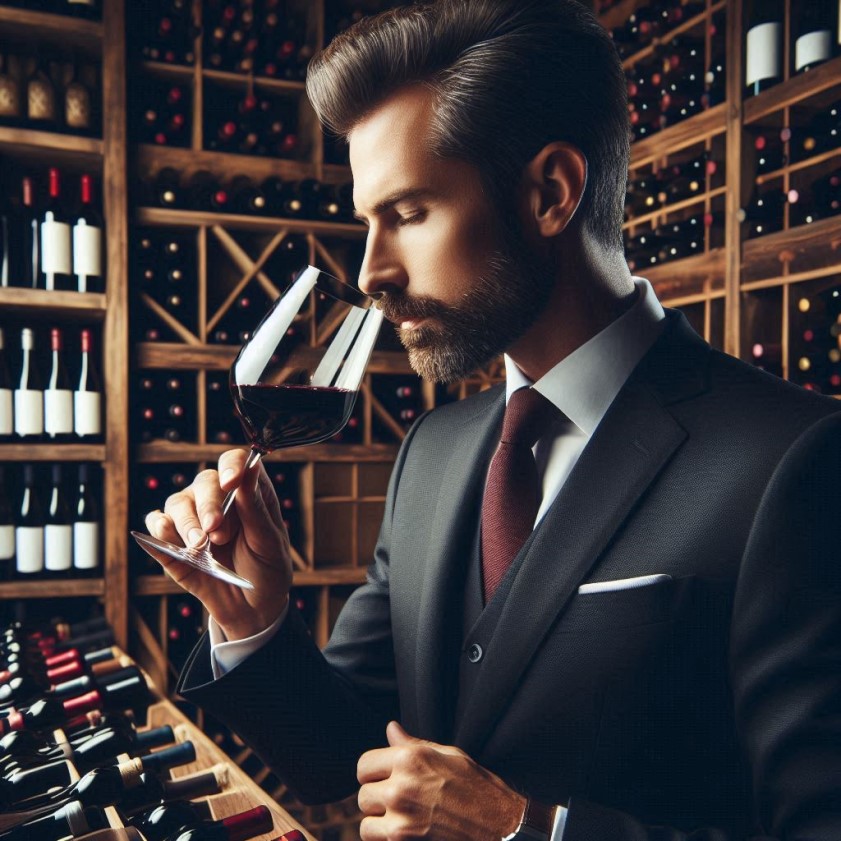The process of wine tasting is not so much a sip of a drink in an elegant glass as it is the art of understanding what is behind each bottle or brand of wine (grape varieties, natural factors of the particular area where the berries grow, aging, hard work of the winemaker, etc.) Learning to taste wine properly means learning to feel it, not just drink it.
Here are the main components of wine tasting:
– how to properly taste wine
– what criteria professional sommeliers use
– how to distinguish high-quality wine from ordinary wine
– what to look for in aroma, taste, structure
– how to develop a good wine taste
What is tasting and why is it needed?
From a scientific point of view, tasting is an analytical assessment of wine according to several parameters simultaneously: appearance, aroma, taste, aftertaste and overall impression. It allows you to determine the quality of the wine, identify possible defects, recognise the style and its origin, find your own taste preferences and, of course, develop wine literacy.
The main three stages of tasting.
Seeing, smelling, and tasting.
All professional tastings are based on three main stages, known since the classical French schools of ancient sommeliers:
Visual analysis (visual assessment)
Wine is not just about taste. The first impression of it is formed by its appearance.
Criteria for visual assessment:
1. Colour: it always depends on the age, variety and style.
– young reds will have a ruby or cherry colour
– old reds are usually dull brick
– young whites are light in colour, with a greenish tint
– aged whites are golden or amber
2. Transparency: a quality wine should be clear, without any cloudiness.
3. Viscosity (‘legs’): slow ‘tears’ on the walls of the glass will indicate a high content of alcohol and glycerin.
🔍 Even the colour of the wine can indicate its age, grape variety and even aging.
Olfactory analysis (aroma).
Aroma is a kind of heart of tasting. It is through the smell that we receive 70-80% of information about wine.
Aroma evaluation criteria:
1. Intensity: weak/medium/expressive aroma
2. Purity: presence of defects (notes of vinegar, mould or sulphur)
3. Complexity: number of aromatic layers
4. Types of aromas (felt during the gradual opening):
– Primary (from the grapes): notes of fruit, berries and flowers
– Secondary (from fermentation): yeast, bread and milk notes
– Tertiary (due to aging): vanilla, tobacco, wood, leather, earth
🧠 Did you know that professional sommeliers train their sense of smell every day: they smell spices, fruits, wood – to recognise the aromas in wine more accurately?

Taste analysis.
This is the stage when the wine is on the tongue. Not only the taste, but also the structure of the wine – so to speak, its ‘architecture’ – is at work here.
Key elements of taste:
– sweetness level: dry, semi-dry, sweet
– acidity: crispness, freshness (it is high acidity that gives wines their ‘life’)
– tannin (only for red wines): a sense of astringency, structure, maturity of tannins
– alcohol: whether it is well integrated into the taste
– body of taste: light/medium/full
– overall balance: whether all elements are harmoniously combined in the taste
– aftertaste: its duration, development, and satisfaction
⌛ A good wine ‘lives’ on the taste buds long after the sip – this is one of the main quality markers.
How to distinguish a good wine from an average one: key criteria
Sign High-quality wine Average/low quality
Aroma Complex, multi-layered One-dimensional or unpleasant Balance Harmony of all components Something ‘stands out’: alcohol, tannins
Finish Long, evolving Short, flat
Body Full, structured Watery or too heavy
Mouthfeel Velvety, deep Harsh or sluggish
Aging ability There is potential for maturation Wine ‘falls’ after a year or two
Typical wine defects to be aware of
– corkiness (TCA): manifested in the smell of wet cardboard, resulting in a loss of aroma
– oxidation: the wine has turned brown, with an apple peel aroma
– reduction: there is a smell of rotten eggs, rubber
– volatile acidity: a distinct smell of vinegar or solvent
Even the most expensive wine can be spoilt – so tasting is essential to identify such problems.
Practical tips for beginners
1. Use the right glasses – the shape is also very important: it affects the aroma and the direction of the wine’s flow in the mouth.
2. Do not smell perfume or other pungent odours before tasting – this will spoil your olfactory perception.
3. Compare wines with each other – tasting in a line develops the sense of smell and taste buds much faster.
4. Keep a tasting diary – write down your impressions regularly.
5. Drink slowly – the taste comes in several waves.
Tasting scale: scoring like a sommelier
A professional wine score usually includes up to 100 points, divided into:
– 10 points – appearance
– 15 points – aroma
– 20 points – taste
– 15 points – aftertaste
– 40 points – overall harmony, quality, potential
How to develop your wine taste: The right way to become a sommelier
– read thematic books (e.g. Wine Folly, The Oxford Companion to Wine)
– regularly attend tastings and famous wine clubs
– actively train your aromatic memory
– learn about the countries where key wine varieties and grape varieties are produced
– don’t be afraid to try something new: from organic to amphorae
📌 A sommelier is not someone who knows everything about wine, but someone who never stops learning.
In general, we can say that wine tasting is a skill that develops without stopping. It requires attention, practice and openness to new experiences. Over time, you will learn to distinguish quality, identify your favourite styles, and most importantly, enjoy wine consciously.
It doesn’t matter if you drink for $10 or $100 – the main thing is that every sip opens up a new world for you.

